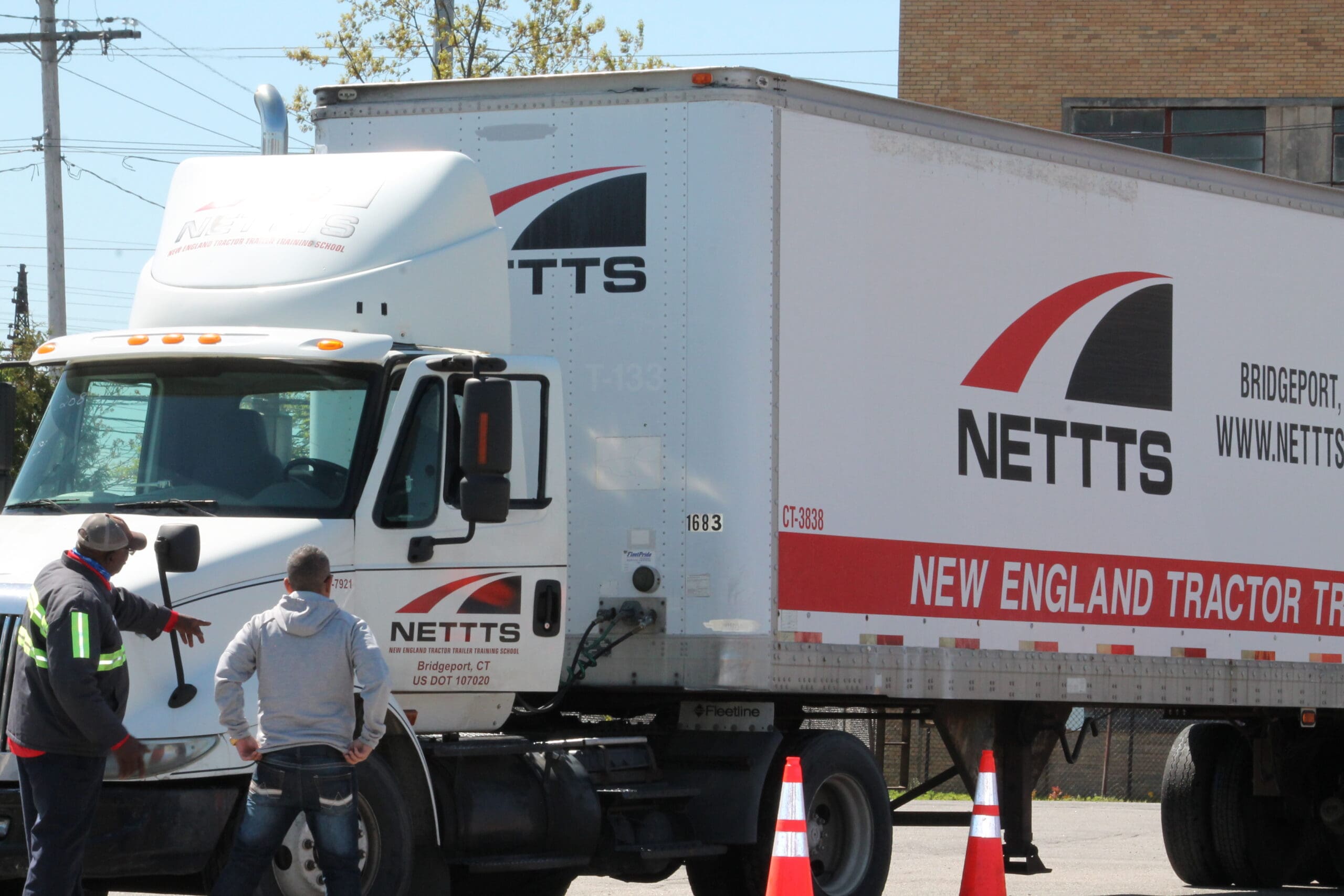
There are several different classes of a Commercial Driver’s Licenses (CDL). They are classified for the different kinds of vehicles that are used for different purposes and gross vehicle weight classes. For example, a school bus is in a different class than a tanker trunk. Tractor trailers, moving vans, city buses and other kinds of trucks are included in one of these CDL categories.
Commercial vehicles are classified as having a Gross Vehicle Weight Rating (GVWR) of 26,001 or more pounds. Here are the groups and what kind of CDL is needed to drive each:
- Class A CDL
With a Class A CDL, a driver is allowed to drive a vehicle towing a trailer (the “tractor” is the cab where the driver sits, and the “trailer” is where the cargo is stored) of a GVWR of more than 10,000 pounds. Most larger trucks that you see on the roads and are pulling a detachable trailer are Class A CDL vehicles. Class A CDL holders drive these large vehicles on different routes that can include local driving, regional routes, or over the road driving.
- Class B CDL
With a Class B CDL, a driver is allowed to drive a vehicle towing a trailer that does not exceed a GVWR of 10,000 pounds, or weighs 26,001 pounds or more but does not have a detachable trailer. An example of this would be a dump truck, trash pick-up truck, bus, or straight truck. Most school buses are Class B CDL vehicles. Class B CDL holders often use these vehicles for delivery, construction, or mass transportation driving.
CDL License Endorsements
After getting a CDL, drivers have the option to add endorsements to their Commercial Driver’s License. An endorsement allows the driver to operate special types of commercial motor vehicles, or haul specific types of goods. Endorsements may require the CDL holder to pass an additional written knowledge test, and in some cases also pass a road skills test. These additional endorsements include:
- Hazardous materials (H) – for transporting HAZMAT
- Tanker (N) – for driving tank vehicles
- Passenger (P) – to operate a vehicle that carriers over a specified number of passengers
- Double or Triple trailer (T) – for transporting multiple trailers
Each type of CDL and endorsement can require passing a skills test and in most cases a written test (depending on State). It is important to make sure to pass ALL the required tests- or risk having restrictions on your license- and therefore, may not be able to drive all types of vehicles.
How Can I Get my CDL?
Steps towards a CDL include:
Preparation
Truck driving schools are out there to help you prepare you for the state CDL exam. Trucking schools like NETTTS can give you behind the wheel training to help learn how to safely operate an 18-wheeler. You may also use them as a sponsor for your CDL road test by using their equipment for the test. Remember that each state has its own processes to getting the CDL so make sure to do your research!
Starting in 2022 there is an Entry-Level Driver Training Requirement for people looking to take the CDL test. Before taking the CDL test, drivers must now successfully complete a specific program of theory and behind-the-wheel instruction provided by a school or other institution list on the FMCSA’s Training Provider Registry (TPR).
Think ahead
Think about what you want to do after your CDL training. What kind of truck are you planning to drive? Also consider the fact that Class A license holders can also drive Class B trucks. But with a Class B license, they can only drive Class B trucks. Think not only about what your plans are right after CDL training, but also several years down the road. Make sure you know your end game so you can prepare appropriately.
Learners’ Permit
Just as you did years ago when you were getting your Driver’s License, you will need to have your Commercial Learners’ permit in order to hit the roads. A learners’ permit means you can practice driving a CDL truck on public roads with a qualified CDL holder sitting next to you. With NETTTS, you don’t have to get your permit before coming to school. We will help you study for the permit test and begin to prepare you for it once you begin school. After that it’s time to learn and then eventually go on the road with our instructors to gain behind the wheel experience.
DOT Physical
Most types of commercial drivers’ licenses permits will require a Department of Transportation (DOT) issued medical card, which means you will be required to pass a DOT physical. This is designed to make sure you are in good physical health and are able to safely operate a CDL vehicle.
Prove your skills
After your training, each driver will need to pass a CDL exam that consists of three parts: Vehicle Inspection Test (pre-trip), Basic Controls Test (maneuvers), and a Road Test (driving). At New England Tractor Trailer Training School our students are exposed during their training to general knowledge of air brake systems and combination vehicles, road side inspections, and much more. Training includes driving our trucks on city streets, rural roads, and highways with guidance from our trainers. They are able to practice these skills prior to taking their CDL test.
If you pass your CDL test
Some states will issue your CDL to you that same day. Others may assign a temporary CDL and then send it to you in the mail. Regardless make sure that everything – all spellings of your name and address – is correct before leaving the building!



